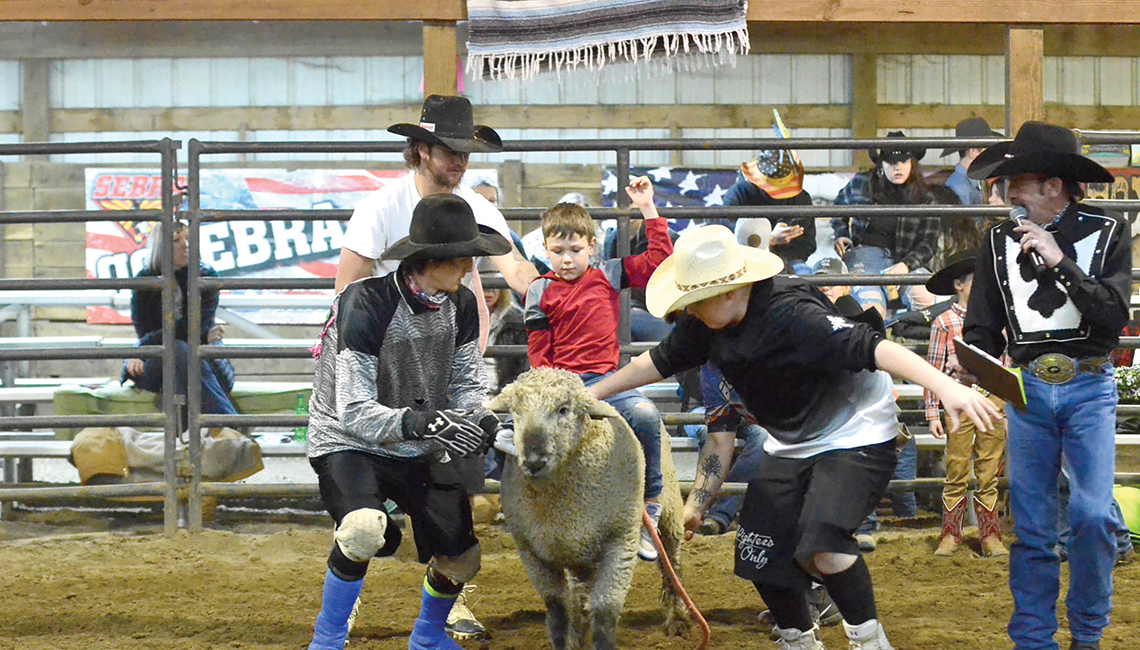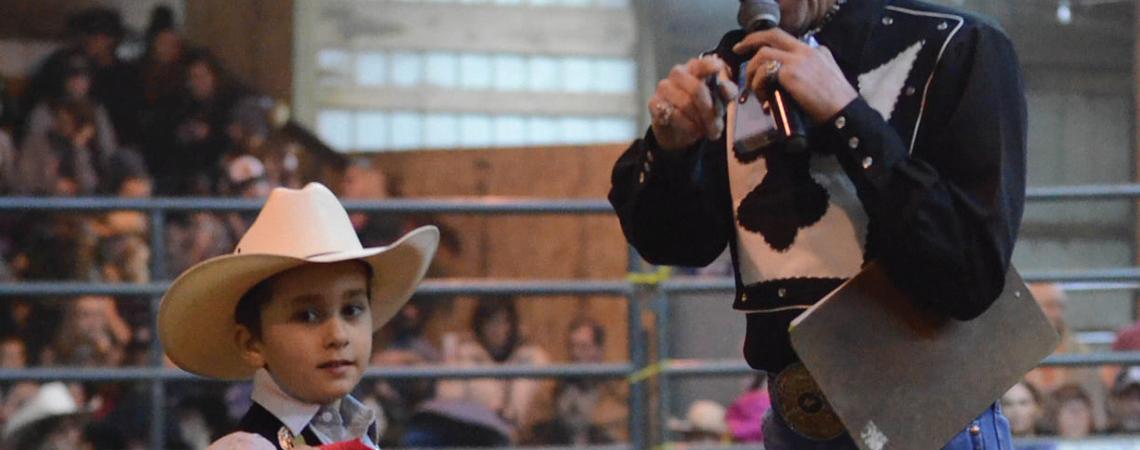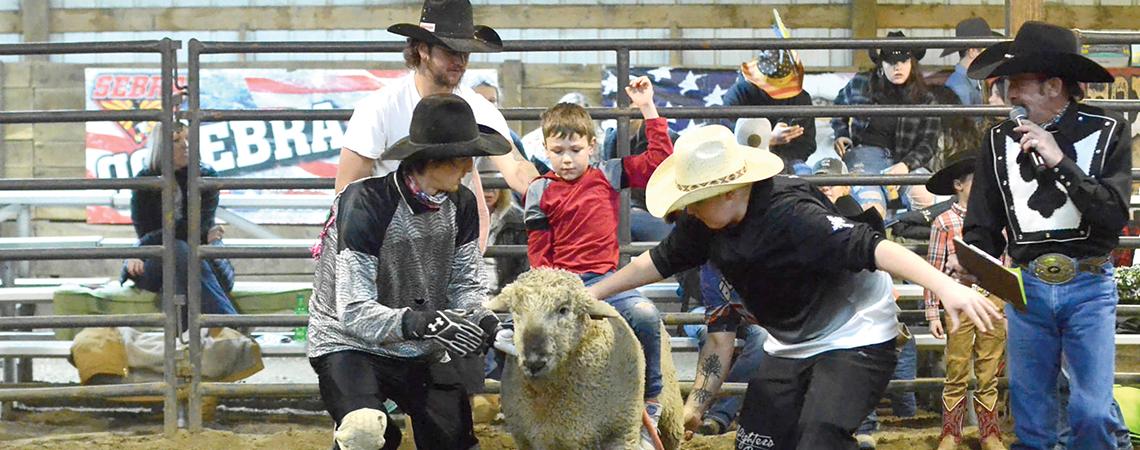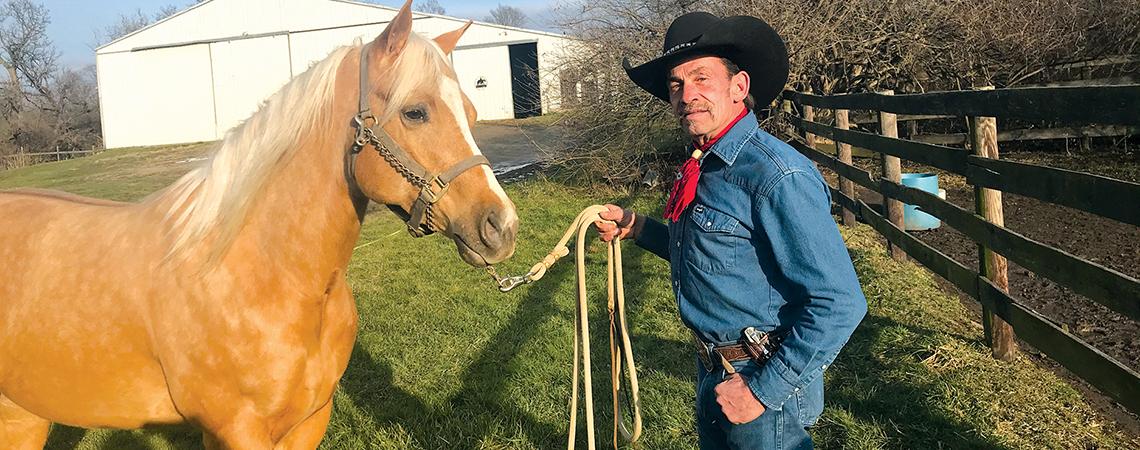Russ Spreckelmeier won his first rodeo prize money at age 11, riding a steer. It was $8, which was both not very much and just enough. “Man, I knew it, then. I knew, this is what I’m gonna do. In all honesty, it felt like a natural talent.”
Spreckelmeier, 57, of Springboro, Ohio, has been riding bulls and broncs ever since, even throughout his six years of service in the Marines. At 5 feet, 5 inches and 155 pounds, Spreckelmeier says, “I wasn’t made for football. Couldn’t play basketball. But the chicks all liked it ’cause I rodeoed. Wore Wranglers and boots to school every day.”
By strapping on spurs and mounting the bucking broncs, he was following in the bootprints of his father, Richard Spreckelmeier, who learned to ride horses bareback in California, during his stint in the Marines.
Russ Spreckelmeier
“Rodeo was really popular in California at the time. They had some real stock out there,” the senior Spreckelmeier says. “When I came back to Ohio, they were just playing around with Wild West shows and such.”
That was in 1959, but in the past half century, rodeo in the East has spread from county fairs to Madison Square Garden. Throughout the U.S. and Canada, it’s become a big-ticket sport, and like the county fairs that spawned it, rodeo is often a family activity centered around a love for horses. Think of it as a variation on dressage or show jumping, with more adrenaline and broken bones.
Horses are the unifying thread that connects the Spreckelmeier family. Russ Spreckelmeier’s great-grandfather, a Dutch immigrant, opened a blacksmith shop in Cincinnati’s Over-The-Rhine neighborhood, and his grandfather was a blacksmith and horse trainer. Russ also trains horses on his Diamond S Ranch in Springboro, but like many in his family, rodeo always has been his first love. Richard, Russ’ father, eventually gave up riding himself, starting his own rodeo and bucking bull breeding operation, and later moving it to New Bern, North Carolina, where he still hosts rodeo events at age 84. Russ’ brother, Casey, rode bulls as a younger man and served as announcer at the family’s North Carolina rodeo. Russ’ daughter, Laura, competes in barrel racing, in which riders and their horses engage in a high-speed and exhilarating demonstration of horsemanship around a cloverleaf track.
Modern rodeo has origins that go back at least to Latin American vaqueros, who competed at fiestas to demonstrate their dexterity at the vocational skills of their trade: riding, roping, and otherwise wrangling large livestock.
From those roots, it has developed into a sport that attracts more than 43 million fans, according to the Professional Rodeo Cowboys Association, the oldest sanctioning body for the sport. The sport continues to grow in popularity at countless independent events and those associated with newer organizations, like the Southern Extreme Bull Riding Association. Based in North Carolina, it sanctions more than 450 events across the U.S. each year, including the bull riding at Fox Hollow Rodeo in Waynesville, Ohio. Fox Hollow is one of the few rodeos in the region that hosts events year-round, and on one September Saturday night, about 800 fans gathered at Fox Hollow to watch the action and cheer on the bull riders as they fought to stay on their mounts for the 8 seconds required to post a score.
Fox Hollow’s summer venue is an outdoor dirt arena surrounded by a pipe rail fence. At the center of the ring that night was none other than Russ Spreckelmeier. He doesn’t yet use the word “retired” — he won his last saddle bronc title in 2017 at the National Professional Armed Forces Rodeo Association — but these days you’re most likely to find Spreckelmeier astride his Appaloosa as the announcer at Fox Hollow. In a western shirt, knotted neckerchief, and black cowboy hat, he serves as emcee and cheerleader, leading the invocation, coaxing the youngest contestants through the “mutton bustin’” event, offering encouragement to the riders, and rousing the crowd.
After four decades of rodeo, Spreckelmeier has seen his share of “wrecks” — rodeo slang for any number of things that can go wrong when riding large animals. He’s broken numerous bones and has several steel bars permanently implanted in his body. His worst wreck, in 2001, led to his being airlifted to the hospital after a bull stepped on his head. Both his eye sockets were rebuilt, leaving one eyebrow permanently cocked, giving him a look of someone who can’t believe you just asked him why he kept riding after that.
“I did think about quitting then,” he says. “In fact, I told everyone I was going to quit. But I missed the crowd, the sounds. I missed the lights. I don’t know. They say rodeo is a bad drug. I guess it is.”
As the sun faded at Fox Hollow and the large overhead lights lit up the dirt arena, Spreckelmeier called on the crowd to make some noise. “We don’t have a professional cheering section, folks. It’s up to you!”
The crowd roared its approval. All was well.













